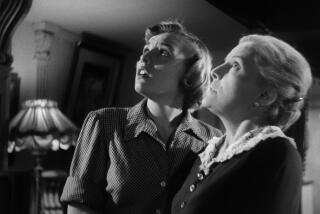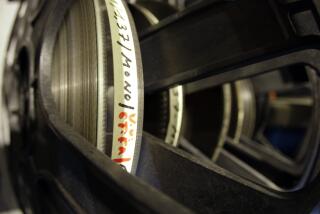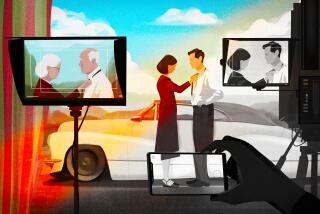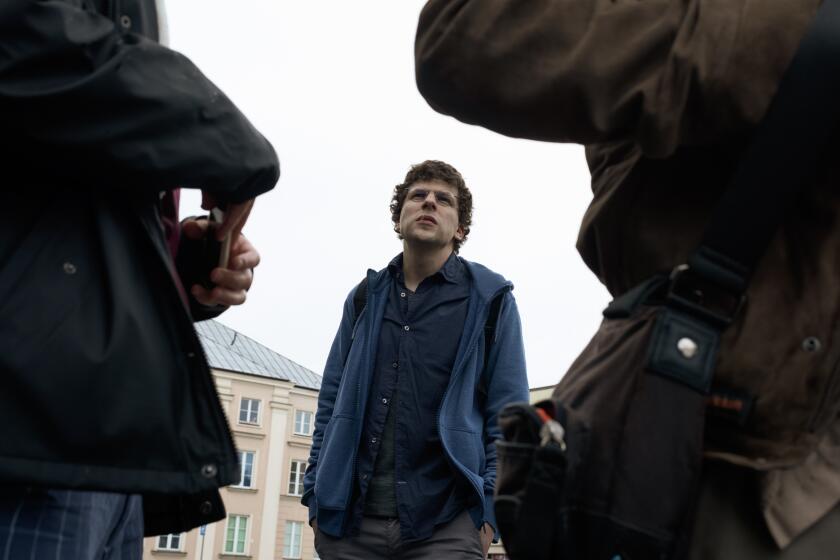‘From Nitrate to Digital’
The film landscape is changing so quickly these days with lively debates over whether to shoot in 3-D or 2-D or use digital or traditional film cameras.
But a new UCLA Film and Television Archive series, “From Nitrate to Digital: New Technologies and the Art of Cinema,” illustrates that technological change is the norm in Hollywood. The program, which opens Saturday at the Billy Wilder Theater, “is about reminding people that the industry has been through these changes before and Hollywood and artists have adapted and adopted to those transitions,” notes programmer Paul Malcolm.
“This is sort of a look back at those points of change, maybe to reassure everybody that it’s going to be OK.”
The first evening features an original nitrate print of the 1935 Josef von Sternberg- Marlene Dietrich collaboration, “The Devil Is a Woman,” and Steven Soderbergh’s 2009 digitally shot film, “ The Girlfriend Experience.” Filmmaker Curtis Hanson hosts the evening; Soderbergh is a guest.
Experiencing a nitrate print of a vintage film is a real treat because the images have an “inner glow which is really quite magical,” says Malcolm.
He points out that “Girlfriend” is an “amazing visual feast” in digital filmmaking.
“It’s wonderful that Soderbergh will be coming in person to talk about his experiences working digitally, compared to his experience working with film,” says Malcolm.
UCLA’s archive preservation officer, Robert Gitt, will be giving two lectures on the history and preservation of color in motion pictures on May 8, along with the screening of 1922’s “The Toll of the Sea,” the first two-color Technicolor motion picture, and 1935’s “Becky Sharp,” the first three-color Technicolor feature. Both films were preserved by the Archive.
Another topic in the series is “From Silent to Sound.” On Sunday evening, UCLA professor Janet Bergstrom and Rita Belda from Sony Picture Entertainment will screen the newly restored silent and sound versions of the 1930 Frank Capra film “Rain or Shine.” Because certain theaters were slow to wire for sound, directors such as Capra would shoot a film in both silent and sound versions. In this case, the silent version is only 67 minutes long, while the sound version is 21 minutes longer and considered the official version of the film.
“A good comparison with what they did with ‘Rain or Shine’ is what they are doing today with 3-D,” says Malcolm. “Sometimes, they will shoot films with the intention of making it 3-D or shoot it in 2-D and convert it to 3-D.”
Rounding out the programming are “From the Inkwell to the Desktop: A Selection of Early Hand-Drawn and Digital Animation,” on May 7; a look at digital visual effects with a screening of 1984’s “The Last Starfighter,” which used photo-realistic 3-D computer graphics in combination with live-action footage, on May 8; and an examination of digital color in Martin Scorsese’s “The Aviator,” in which two- and three-color Technicolor were simulated digitally, on May 9.
For information go to https://www.cinema.ucla.edu.
More to Read
Only good movies
Get the Indie Focus newsletter, Mark Olsen's weekly guide to the world of cinema.
You may occasionally receive promotional content from the Los Angeles Times.











